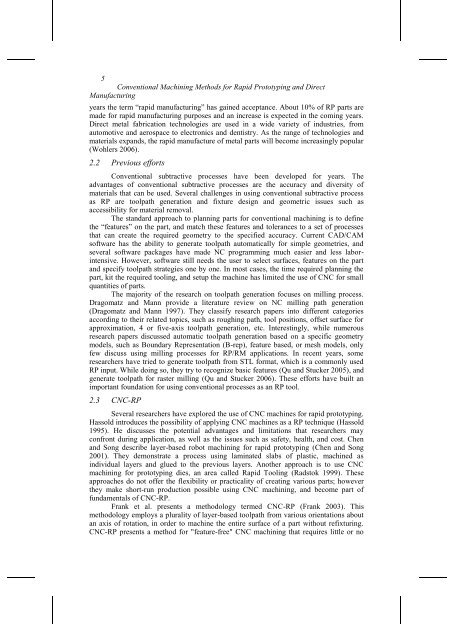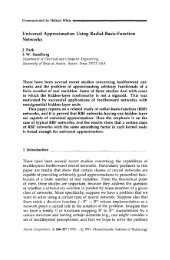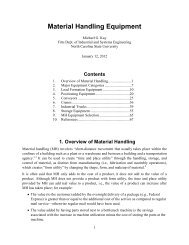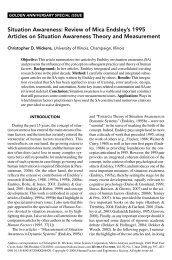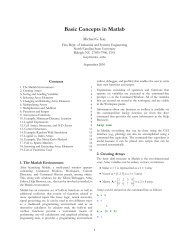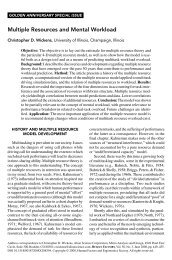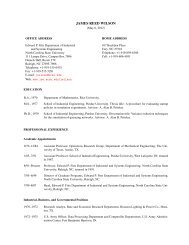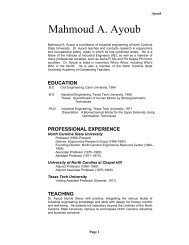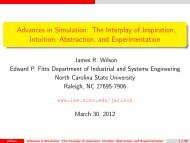Conventional Machining Methods for Rapid Prototyping
Conventional Machining Methods for Rapid Prototyping
Conventional Machining Methods for Rapid Prototyping
Create successful ePaper yourself
Turn your PDF publications into a flip-book with our unique Google optimized e-Paper software.
5<br />
<strong>Conventional</strong> <strong>Machining</strong> <strong>Methods</strong> <strong>for</strong> <strong>Rapid</strong> <strong>Prototyping</strong> and Direct<br />
Manufacturing<br />
years the term “rapid manufacturing” has gained acceptance. About 10% of RP parts are<br />
made <strong>for</strong> rapid manufacturing purposes and an increase is expected in the coming years.<br />
Direct metal fabrication technologies are used in a wide variety of industries, from<br />
automotive and aerospace to electronics and dentistry. As the range of technologies and<br />
materials expands, the rapid manufacture of metal parts will become increasingly popular<br />
(Wohlers 2006).<br />
2.2 Previous ef<strong>for</strong>ts<br />
<strong>Conventional</strong> subtractive processes have been developed <strong>for</strong> years. The<br />
advantages of conventional subtractive processes are the accuracy and diversity of<br />
materials that can be used. Several challenges in using conventional subtractive process<br />
as RP are toolpath generation and fixture design and geometric issues such as<br />
accessibility <strong>for</strong> material removal.<br />
The standard approach to planning parts <strong>for</strong> conventional machining is to define<br />
the “features” on the part, and match these features and tolerances to a set of processes<br />
that can create the required geometry to the specified accuracy. Current CAD/CAM<br />
software has the ability to generate toolpath automatically <strong>for</strong> simple geometries, and<br />
several software packages have made NC programming much easier and less laborintensive.<br />
However, software still needs the user to select surfaces, features on the part<br />
and specify toolpath strategies one by one. In most cases, the time required planning the<br />
part, kit the required tooling, and setup the machine has limited the use of CNC <strong>for</strong> small<br />
quantities of parts.<br />
The majority of the research on toolpath generation focuses on milling process.<br />
Dragomatz and Mann provide a literature review on NC milling path generation<br />
(Dragomatz and Mann 1997). They classify research papers into different categories<br />
according to their related topics, such as roughing path, tool positions, offset surface <strong>for</strong><br />
approximation, 4 or five-axis toolpath generation, etc. Interestingly, while numerous<br />
research papers discussed automatic toolpath generation based on a specific geometry<br />
models, such as Boundary Representation (B-rep), feature based, or mesh models, only<br />
few discuss using milling processes <strong>for</strong> RP/RM applications. In recent years, some<br />
researchers have tried to generate toolpath from STL <strong>for</strong>mat, which is a commonly used<br />
RP input. While doing so, they try to recognize basic features (Qu and Stucker 2005), and<br />
generate toolpath <strong>for</strong> raster milling (Qu and Stucker 2006). These ef<strong>for</strong>ts have built an<br />
important foundation <strong>for</strong> using conventional processes as an RP tool.<br />
2.3 CNC-RP<br />
Several researchers have explored the use of CNC machines <strong>for</strong> rapid prototyping.<br />
Hassold introduces the possibility of applying CNC machines as a RP technique (Hassold<br />
1995). He discusses the potential advantages and limitations that researchers may<br />
confront during application, as well as the issues such as safety, health, and cost. Chen<br />
and Song describe layer-based robot machining <strong>for</strong> rapid prototyping (Chen and Song<br />
2001). They demonstrate a process using laminated slabs of plastic, machined as<br />
individual layers and glued to the previous layers. Another approach is to use CNC<br />
machining <strong>for</strong> prototyping dies, an area called <strong>Rapid</strong> Tooling (Radstok 1999). These<br />
approaches do not offer the flexibility or practicality of creating various parts; however<br />
they make short-run production possible using CNC machining, and become part of<br />
fundamentals of CNC-RP.<br />
Frank et al. presents a methodology termed CNC-RP (Frank 2003). This<br />
methodology employs a plurality of layer-based toolpath from various orientations about<br />
an axis of rotation, in order to machine the entire surface of a part without refixturing.<br />
CNC-RP presents a method <strong>for</strong> "feature-free" CNC machining that requires little or no


